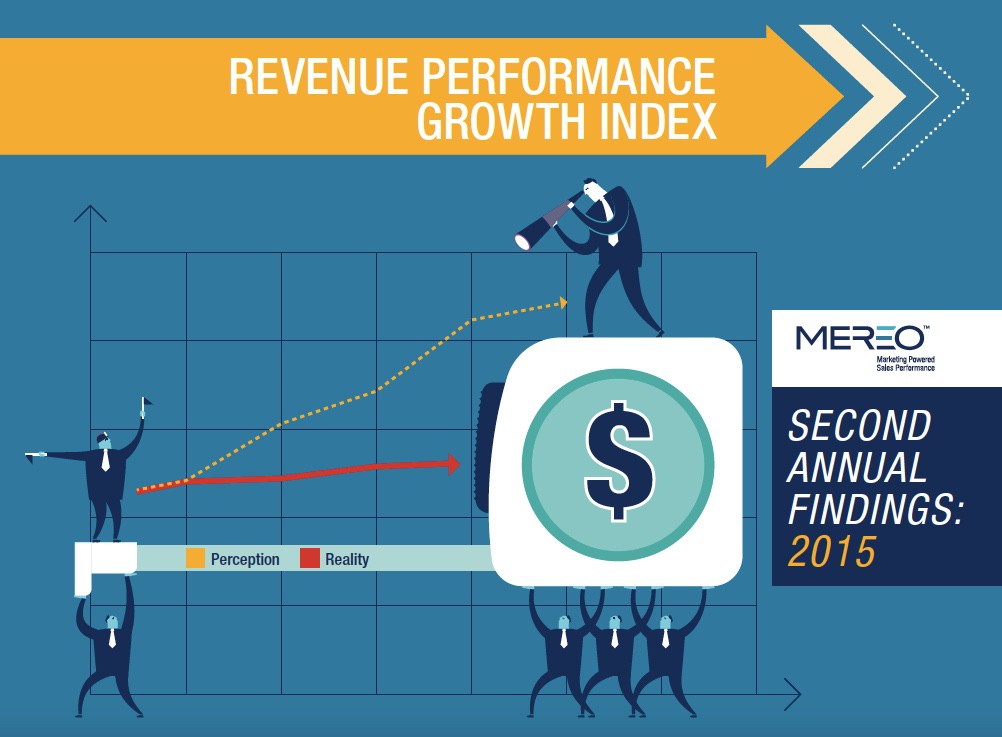The recently released 2nd annual Revenue Performance Growth Index Annual Report for 2015 once again shows what can only be viewed as disappointing revenue results for both large and mid-size US public corporations, as well as the largest international firms. A quick snapshot of the report reveals some disturbing results and trends:
- 29% of Fortune 500 companies had negative revenue growth this past year, and 40% grew at a less than 2% rate
- 28% of the Russell 2000 companies had declining revenue, while 42% grew at a rate less than 2%
- 36% of the Fortune Global 500 companies had negative growth over the past 3 years with 66% averaging less than 2% growth
Finally, and perhaps most alarmingly, over the past 6 years (since the bottom of the “Great Recession”) 1 in 5 companies are smaller now than in 2008, and another 10% grew at less than 2% coming out of this deep recession.
What is a sales person or sales manager to do in light of these results, and how does a marketing organization best arm sales for success in an environment that could well be described as hostile?
Let’s start with what these results mean, in general, for the organizations studied. These results likely translate into financial officers driving a focus within the organizations on cost and expense control and on productivity improvement. With little evidence that the go-to-market organizations can or will yield positive results, the internal focus is to cut, cut, cut and cut some more. Driving revenue growth is imperative, and programs to support that should gain traction. Yet the natural bent for executive leadership to deliver earnings growth is on expense control, while revenue programs will need to prove their value and show a track record of success to gain broader support.
As a sales person or manager selling to these companies in this business environment do not despair, especially if your solutions/products can demonstrate an ability to reduce costs or improve productivity. But, be aware that the buyers of a solution, your buyers, may be more skeptical than normal. This puts a premium on ensuring you and your team take the time to fully understand the prospect’s business and financial environment through advance research and in-depth discovery. And do not forget that your buyers’ personal success (e.g. salary, bonus, other compensation and maybe even career) may well be dependent on showing success in controlling costs and other expense-based metrics.
You also need to position your solution in terms of the ROI it will drive with specific proof points based on actual results, industry standards and always-critical customer success stories and references. In a difficult selling environment, references are even more critical as proof points – especially those in the same industry with similar problems and with buyers in similar positions.
If your solution can support revenue growth, your prospect’s recent history – and that of the industry at large – may create an environment of even greater skepticism. This may entail an even greater need to speak to specific pain points and issues that have been preventing growth. Further, it will likely mean you will need to be more prepared with well-grounded data, statistics and market information that support your position AND provide needed insights for your prospect. Finally, be prepared to demonstrate specifically how your solution solves the identified pain points including “day in the life of…” scenarios and prove your differentiated value proposition in context of your buyers’ environment with client value stories and strong references.
Companies can and do win in this environment. Let’s rephrase the previous statement for emphasis – Not only can you be successful, but you can be wildly successful in an economic climate such as this. Moreover, you can rise above the crowd and differentiate yourself for times when the headwinds are not so strong. Those organizations and professionals delivering breakthrough revenue performance focus on the sales team’s ability to properly prepare, discover and articulate key pain points, and position their solution to uniquely solve those specific issues. In addition, specific ROI benefits and supporting proof and references are critical to gaining approval of funds as your buyers seek to justify the investment. Marketing can support sales by fully vetting existing clients, developing reference customer engagement and nurturing processes and programs. They can also publish detailed customer value studies, as well as other sales ready assets, to support ROI and revenue growth capabilities. Ensure those tools in the sales kit are oriented around your target buying audience’s situation and reinforce the compelling value proposition your solution delivers.
Check out the full report to see the declining trends mentioned above HERE, and let us know how we can help your team win in this economic climate.
303.495.5200
